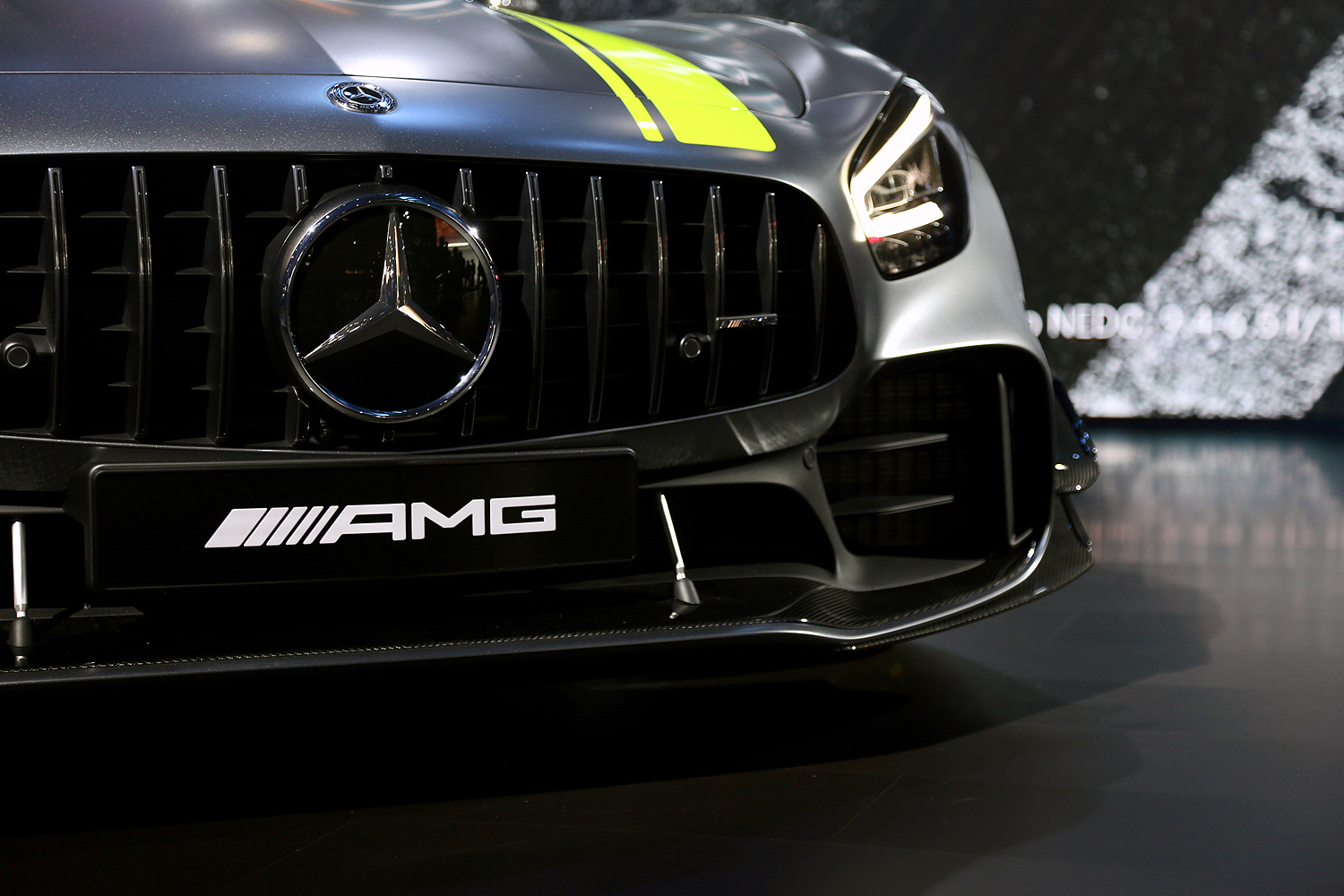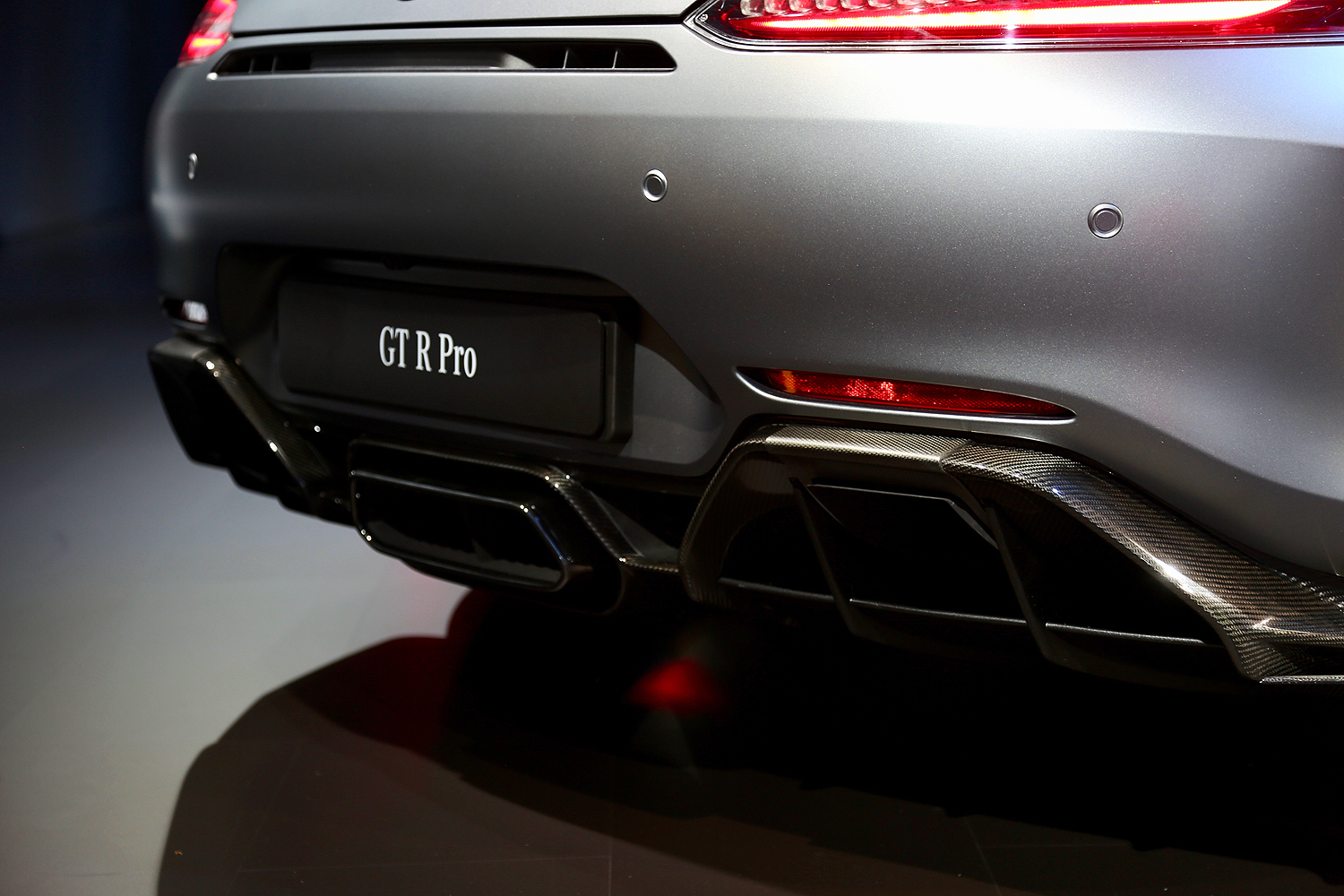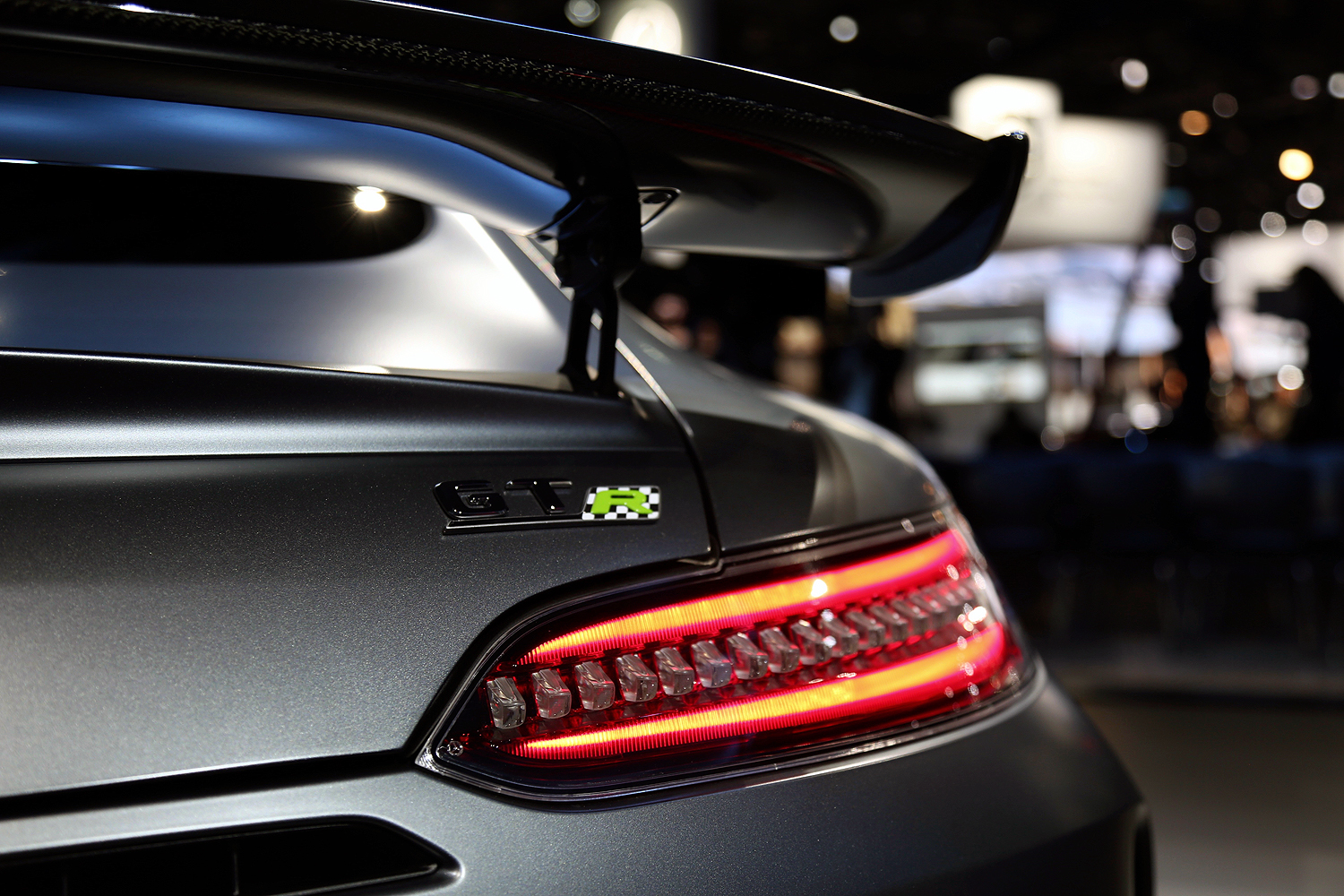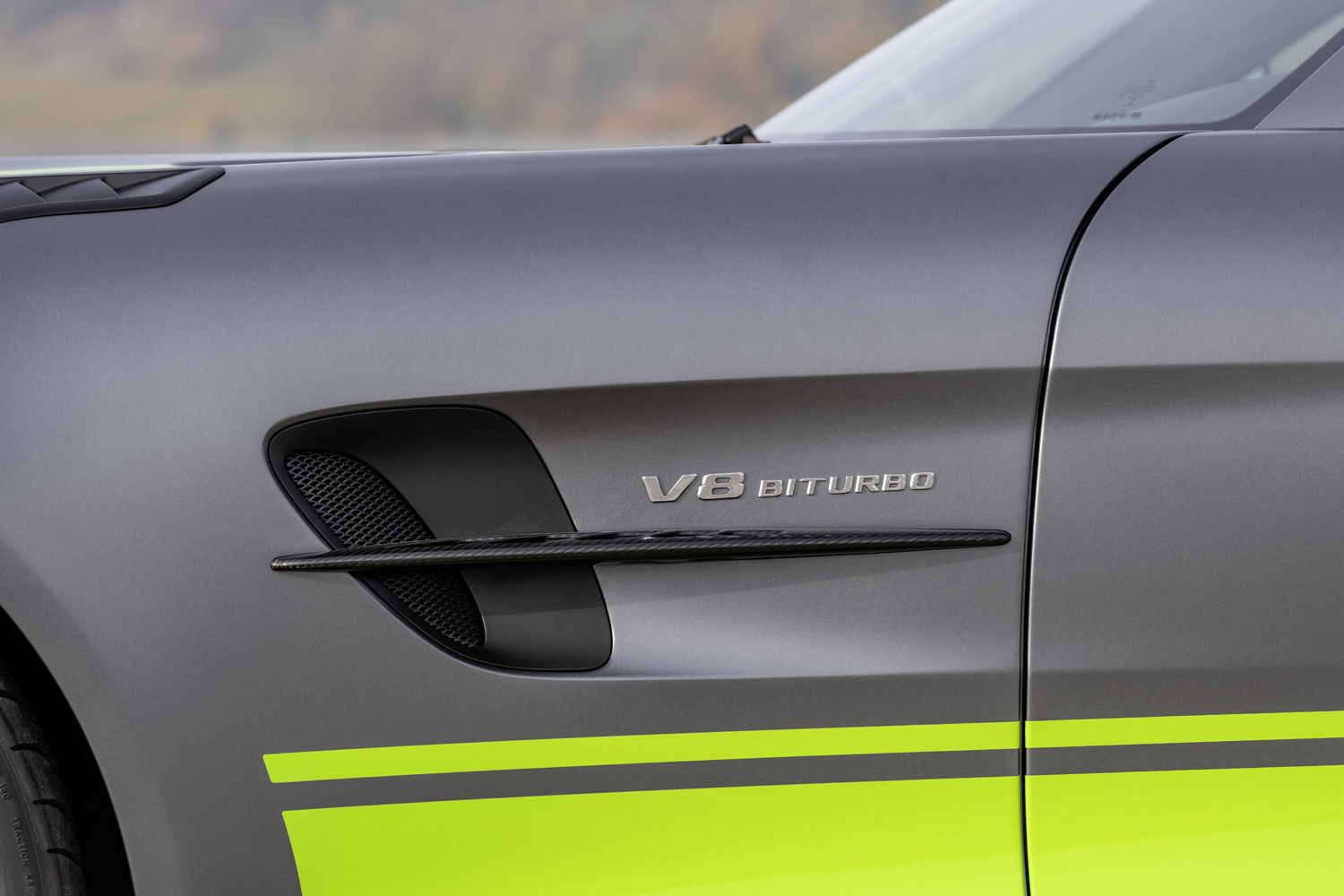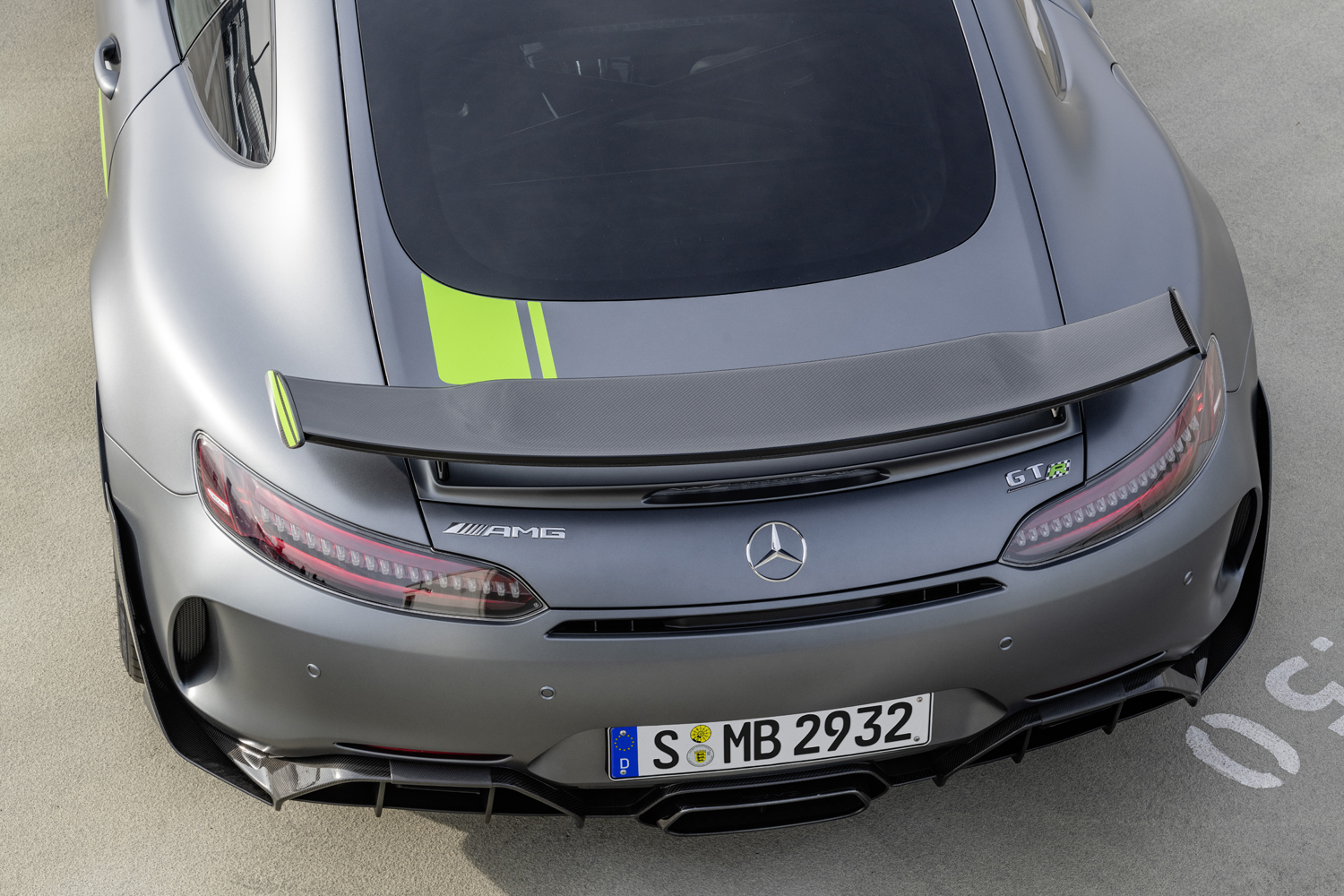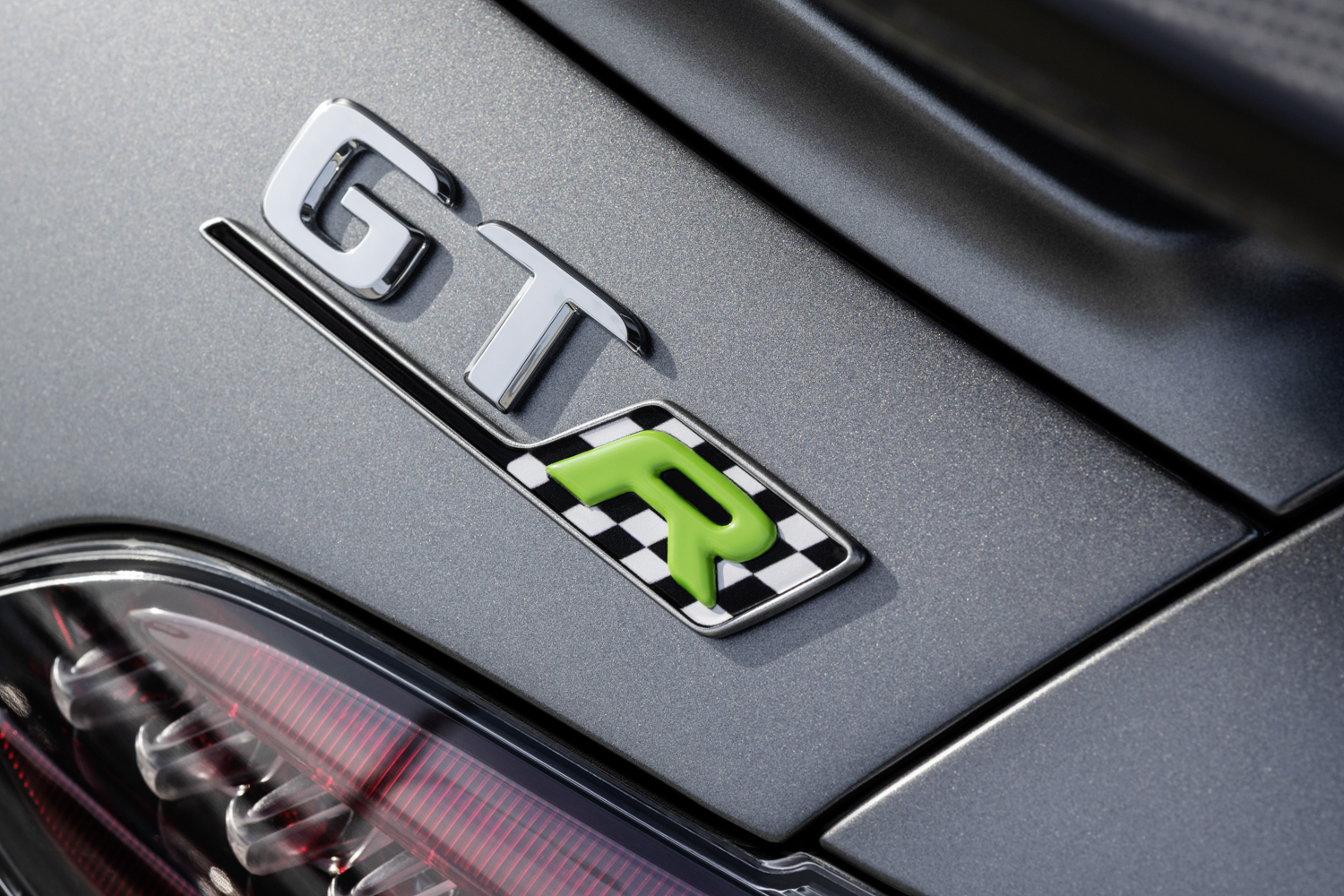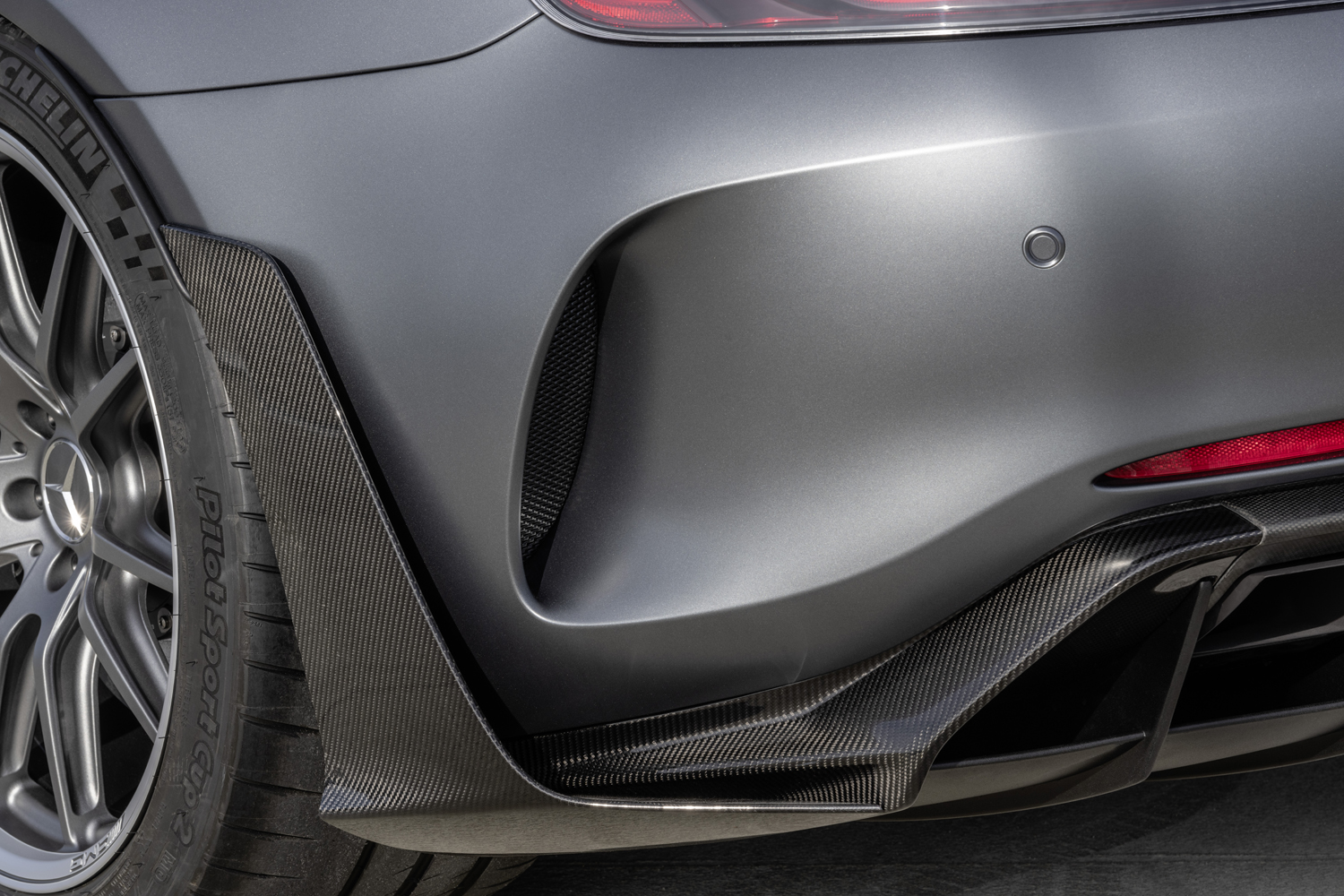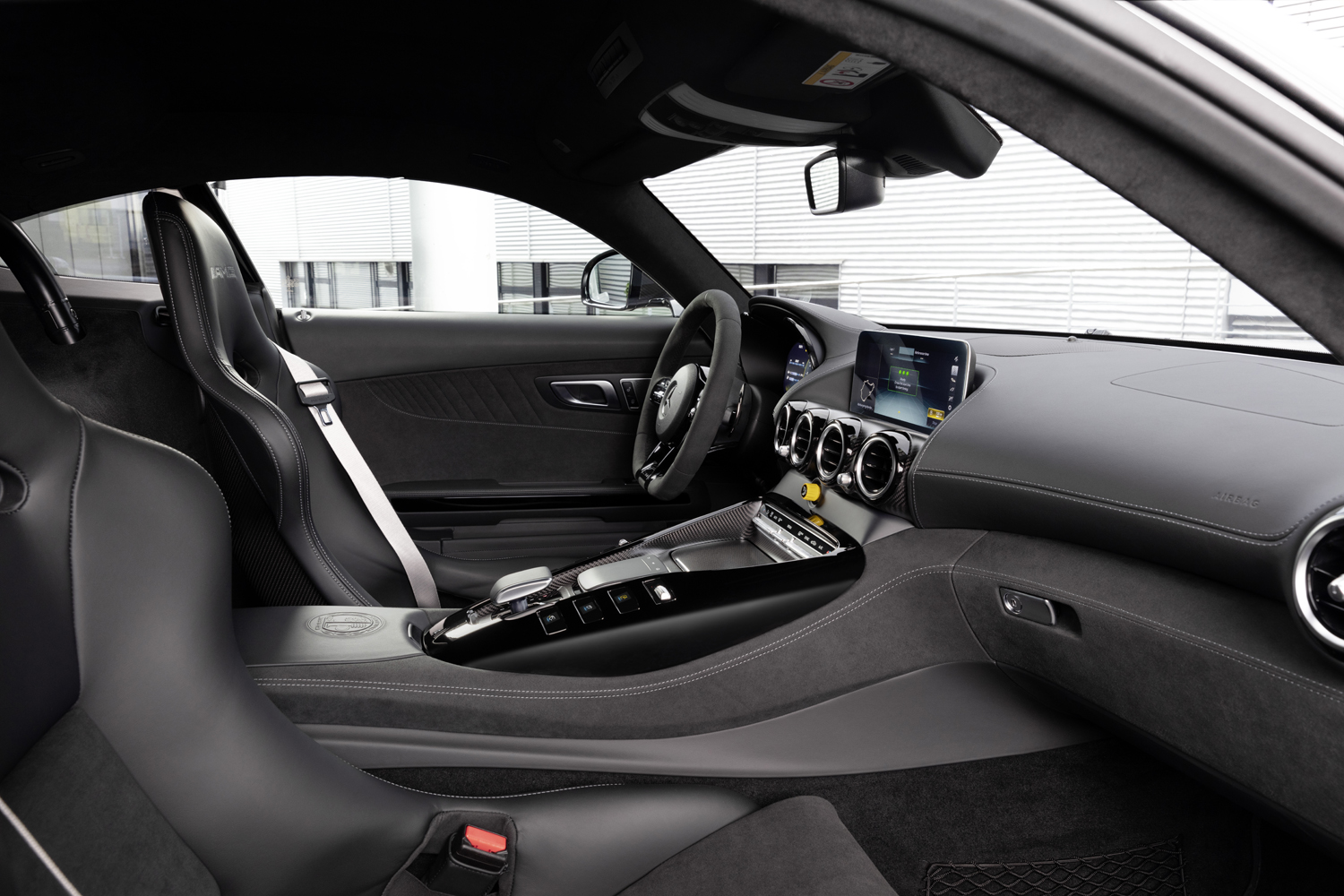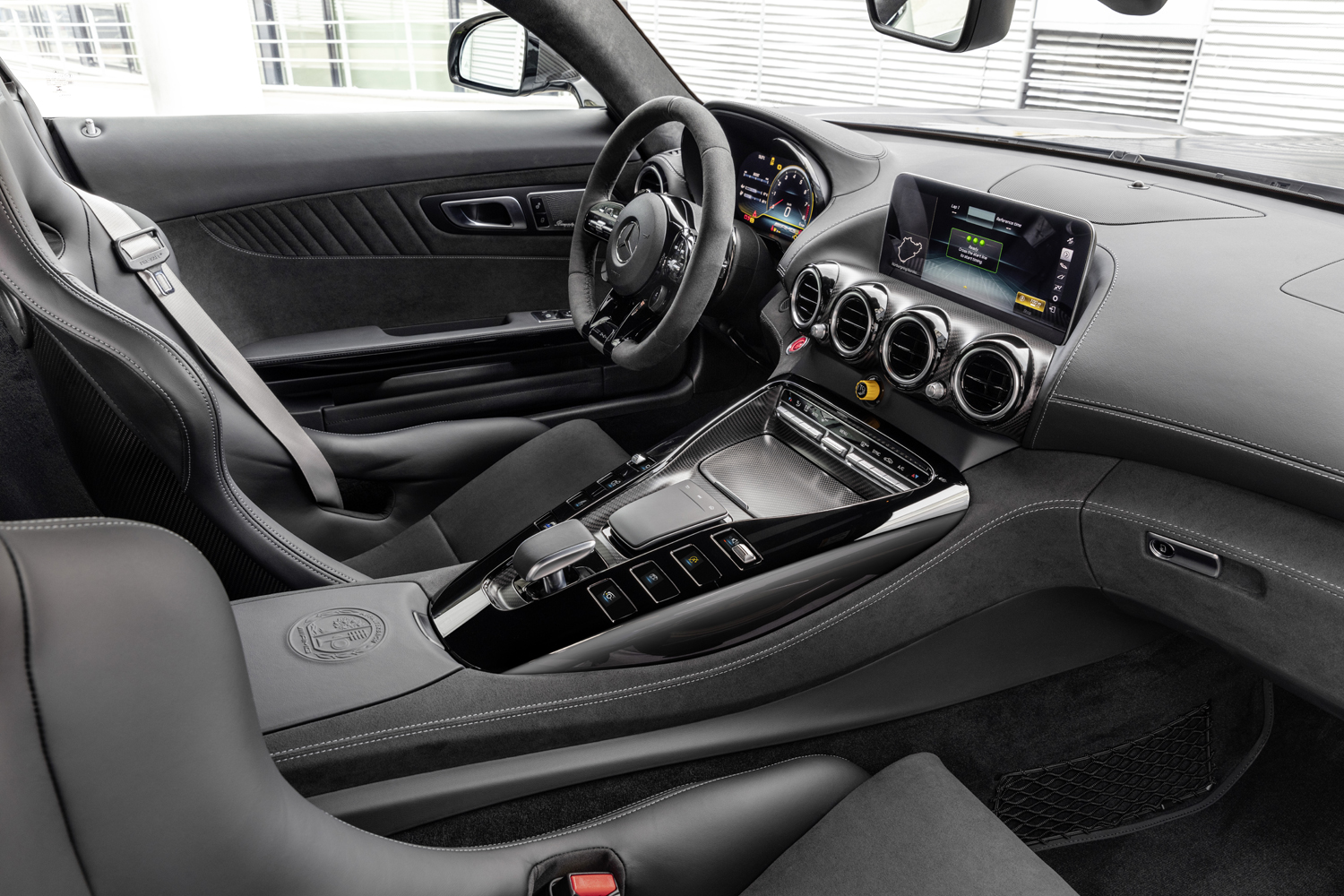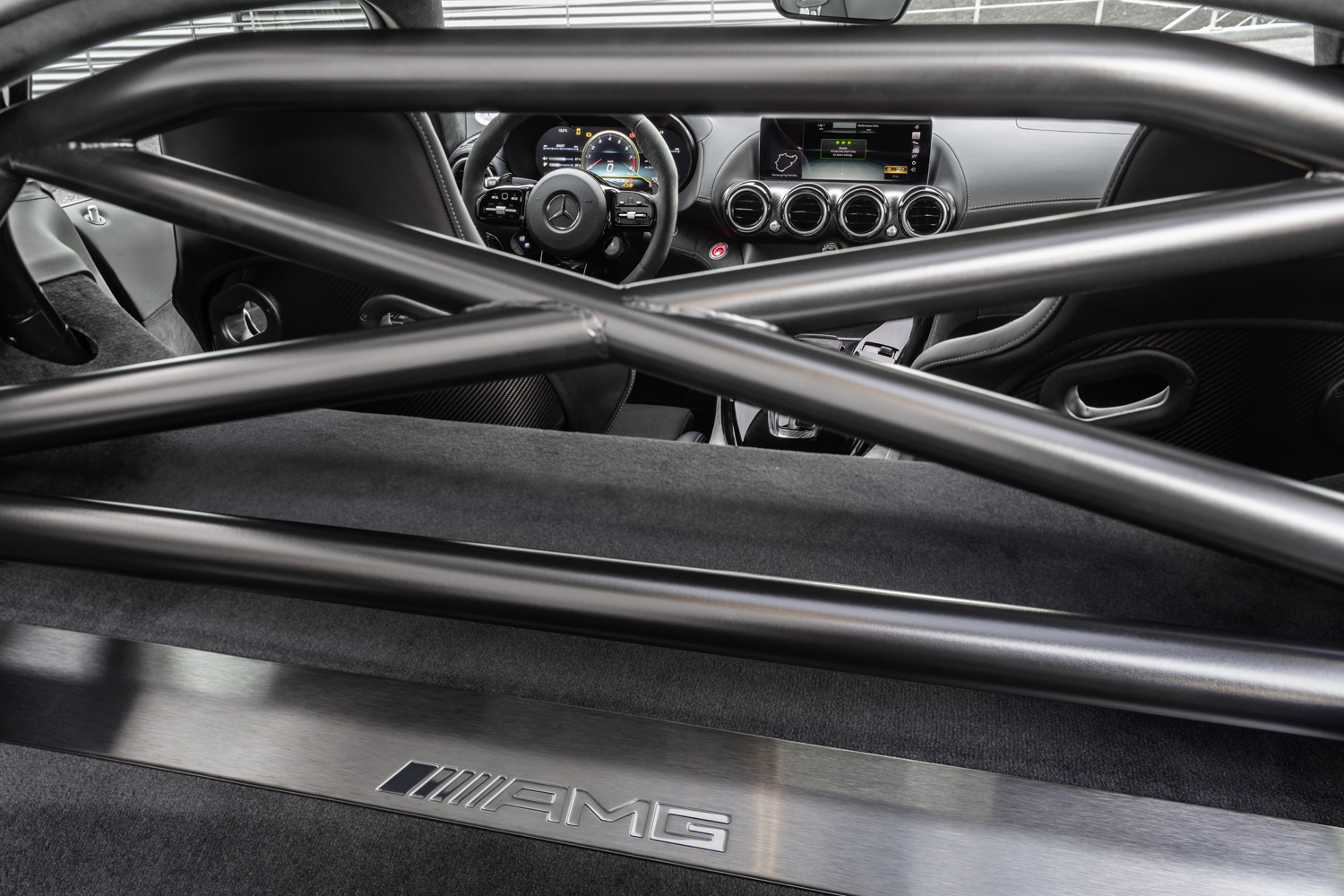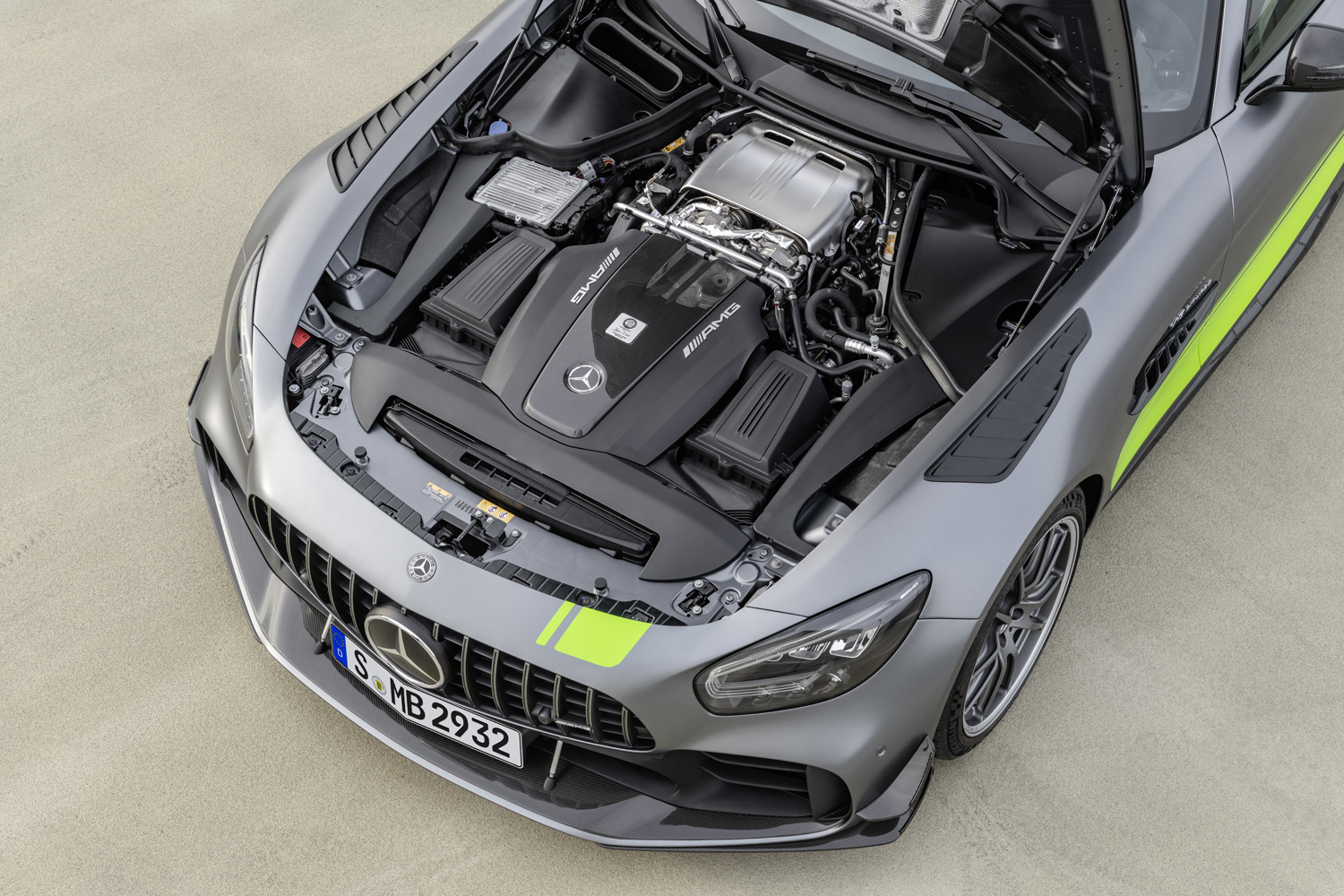Mercedes-AMG’s entry in the cut-throat sports car segment just got a lot smarter. The performance arm of Mercedes-Benz traveled to the 2018 Los Angeles Auto Show to unveil an updated GT that learned several new tech tricks without forgetting about dynamism. And, it expanded the lineup with a race-ready, limited-edition model called GT R Pro.
The GT made its debut in 2014, and AMG has learned a lot since by racing it around the world. It’s channeling this experience into the GT R Pro, which blends the boundary between a street car and a race car. Though it’s mechanically identical to the GT R, the Pro variant benefits from a fully adjustable coil-over suspension (including an adjustable front torsion bar made with carbon fiber) and from standard weight-saving components like powerful, fade-free carbon ceramic brakes. The roof panel is made with carbon fiber, too.
Aerodynamic enhancements complete the package. They’re not just for looks, either. AMG explains the air slots in the front fenders help reduce front axle lift by venting the wheel arches. Finally, an available racing stripe package sets the Pro apart from the other GTs. The stripes are green when customers order the Pro in selenite gray and dark gray when another color is selected. Alternatively, enthusiasts seeking a more low-key design can configure a stripe-less car.
For the rest of the range, the visual changes are minor at best. Designers tweaked the lower part of the front bumper and added a new-look diffuser out back. Additional wheel designs and paint colors round out the exterior changes, meaning the 2020 GT doesn’t look drastically different than the 2019 model. That’s a good thing; we think it’s one of the best-looking two-doors on the market. Besides, in this case it’s what’s inside that really counts.
The GT benefits from a surprising amount of technology upgrades for a sports car. Mercedes integrated a 12.3-inch screen into the dashboard to replace the analog instrument cluster and added a second, 10.2-inch display for the infotainment system. The driver-configurable digital instrument cluster boasts three display styles called classic, sport, and supersport, respectively. The driver can choose which information to display by using buttons on the flat-bottom steering wheel. The options include a speedometer, a tachometer, a g-force meter, and gauges that show the engine’s horsepower and torque outputs in real time.
The technology features continue beyond the dashboard thanks in part to a feature named AMG Dynamics. It makes the GT more agile around a race track by predicting how the car will react to driver input using information sent from sensors. It unlocks higher lateral acceleration and better traction, but AMG promises the driver doesn’t feel the system intervening. The GT’s handling remains authentic.
Mercedes-AMG hasn’t made any significant mechanical upgrades. Every GT comes with a twin-turbocharged, 4.0-liter V8 engine. The standard model boasts 469 horsepower and 465 pound-feet of torque, enough for a 3.9-second sprint from zero to 60 mph. The mid-level GT C ups the ante with 550 hp and 502 lb-ft of torque, and a 3.6-second zero-to-60-mph time. Finally, the GT R reigns supreme with a 577 hp evolution of the V8. The additional power shaves a tenth of a second from its zero-to-60-mph time. The top speeds for the three models check in at 189, 196, and 198 mph, respectively.
After greeting the show-going public in Los Angeles, Mercedes-AMG’s updated GT range will reach American showrooms in 2019. Pricing information hasn’t been released yet, but AMG told Digital Trends the GT R Pro model will only be offered during the 2020 model year. When it lands, one of its chief rivals will be the brand-new 2020 Porsche 911 that also made its official debut during the 2018 Los Angeles Auto Show.


